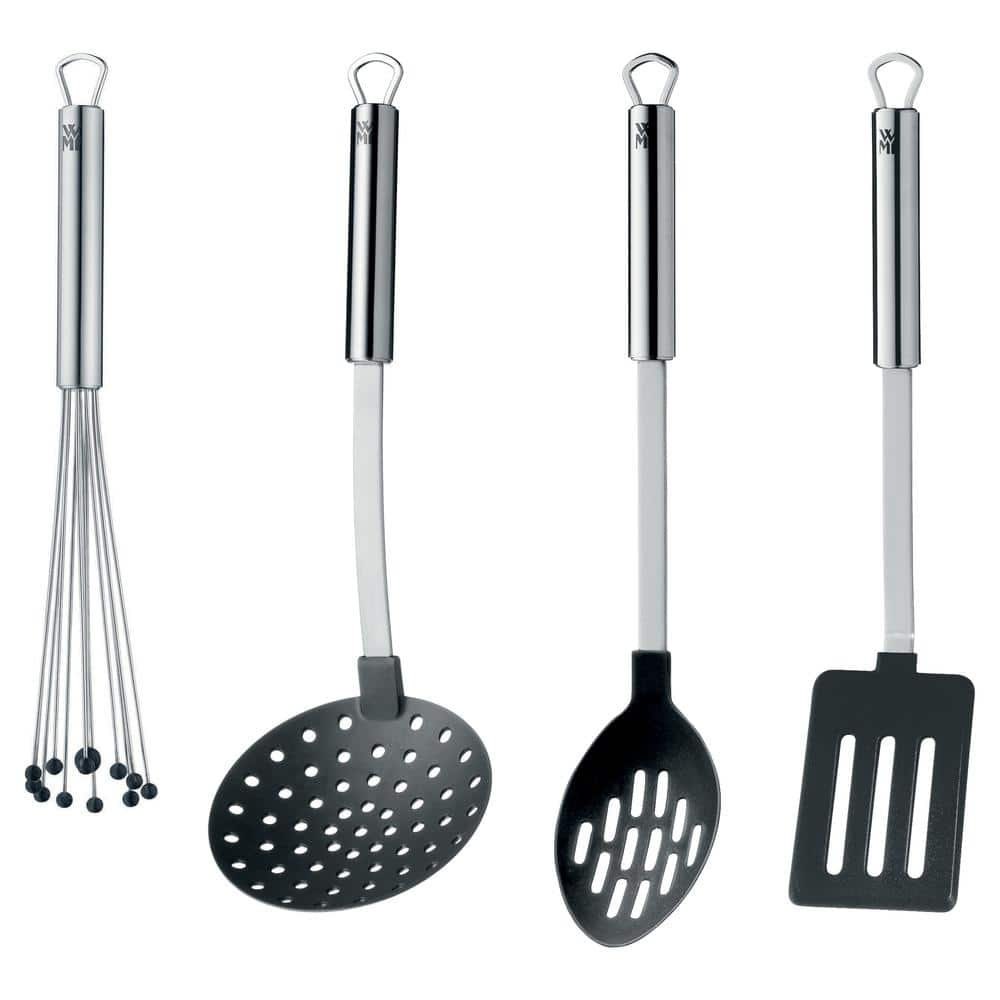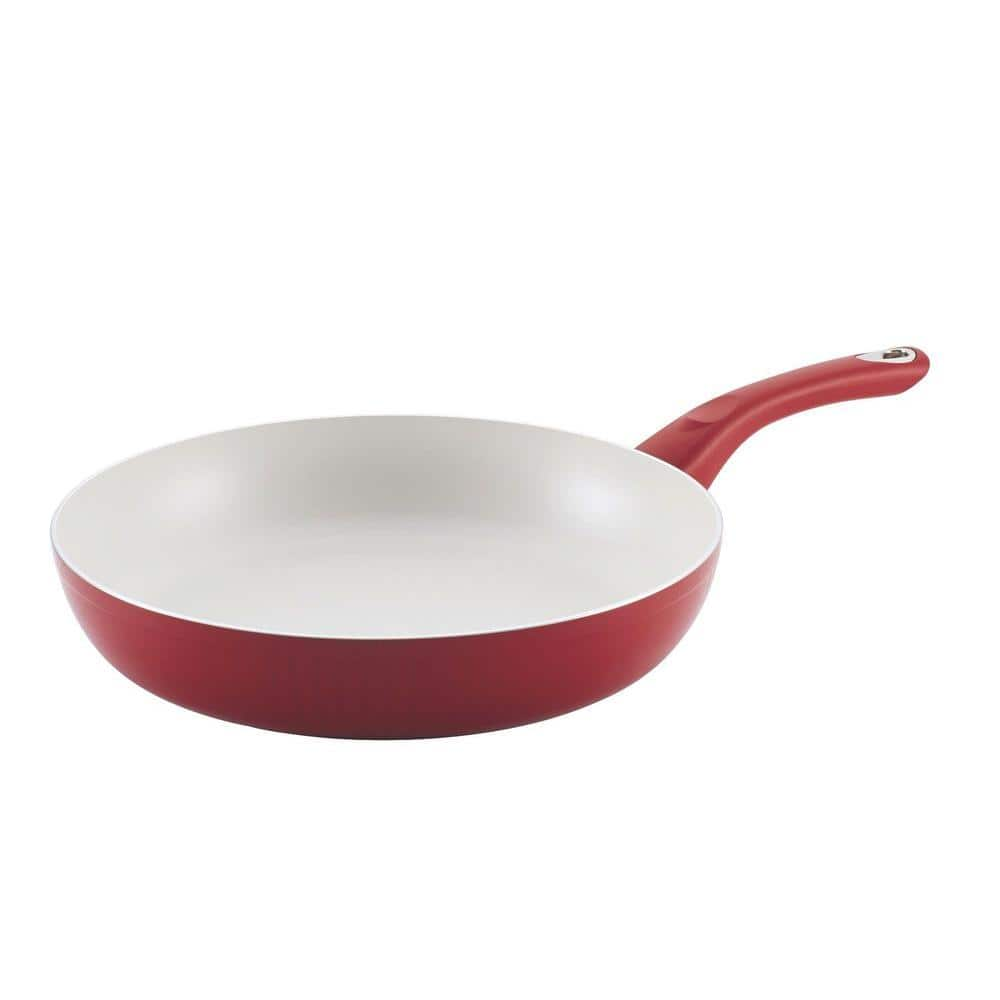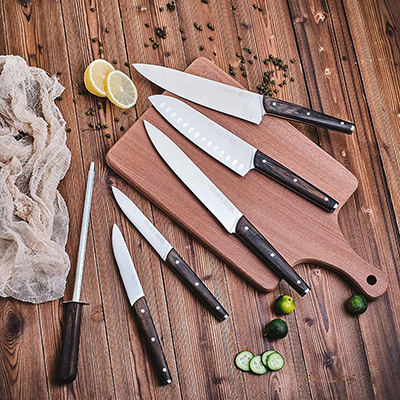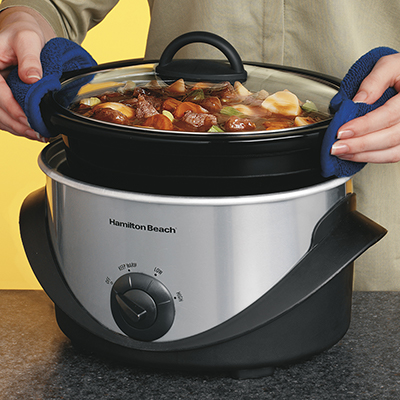Best Woks for Your Kitchen

Last updated September 7, 2023
Like a great skillet, a wok should be a part of any well-stocked kitchen. The best woks are designed to quickly sear, deep-fry, steam, boil and stir-fry. This guide will introduce you to a variety of woks. Read on to find a wok material or style that works for you. It has tips on how to choose the best wok for your recipes. You'll learn about accessories that make wok cooking easier. Plus, learn hacks that will speed up cleaning and help preserve your wok.
Table of Contents
What is a Wok?
Carbon Steel Woks
Stainless Steel Woks
Non-Stick Woks
Aluminum Woks
Cast Iron Woks
What is a Wok?
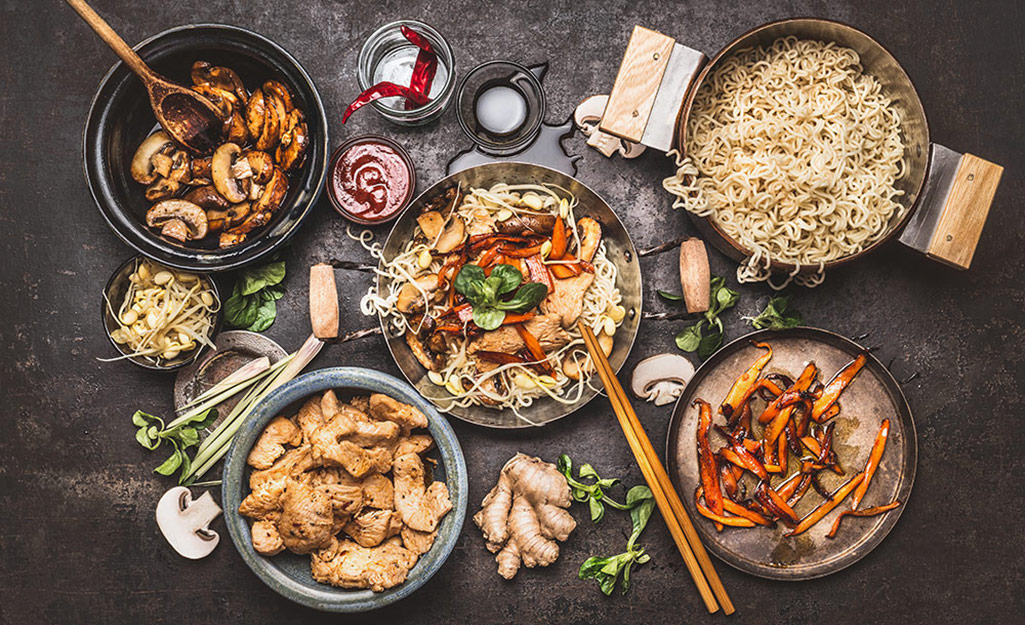
A wok is an efficient piece of cookware. It distributes the heat source quickly throughout a large surface area. This aids in cooking food evenly with a minimum amount of oil. Used skillfully, wok cooking helps preserve peak flavors and textures of foods. Wok cooking keeps the vitality and nutrients intact in fresh proteins and veggies.
Carbon Steel Woks

Fresh and fast cooking is the beauty of having a carbon steel wok.
One of the best woks available, carbon steel handles high temperatures. This makes them perfect for searing meats and cooking vegetables fast. They're also durable, oven-safe and rust-resistant.
Carbon steel woks can be used with any type of cook top. It's lighter and less brittle than cast iron. Carbon steel is high maintenance, though. It requires a lot of seasoning. It requires hand-washing, drying and oiling.
Stainless Steel Woks
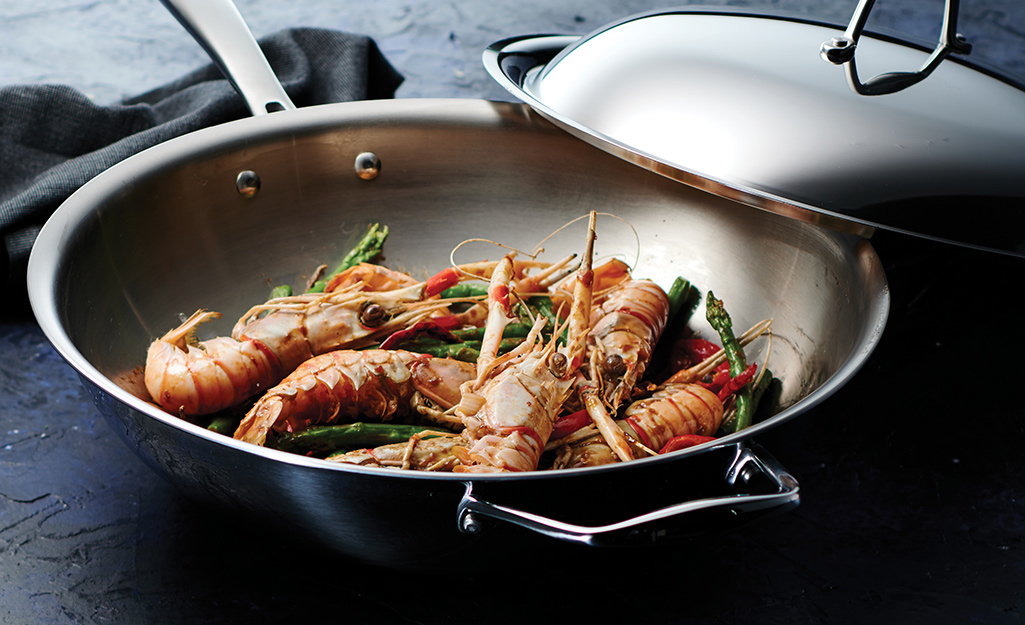
Some of the best wok pans are made of stainless steel. Stainless steel woks can handle the high temperatures needed for stir-fry dishes. It's lightweight and can easily capture the flavors of acidic foods. You’ll need to use more oil to prevent sticking, especially for meats. It can stand up to sharp or metal cooking utensils without getting scratched. Stainless steel woks are extremely easy to care for and clean.
Non-Stick Woks

Woks with a non-stick coating work well for light frying and stirring. They work better with lower temperatures and are dishwasher safe. Use them with high-heat plastic utensils because they can scratch easily. Coatings come in different forms, from ceramic to anodized aluminum.
Aluminum Woks
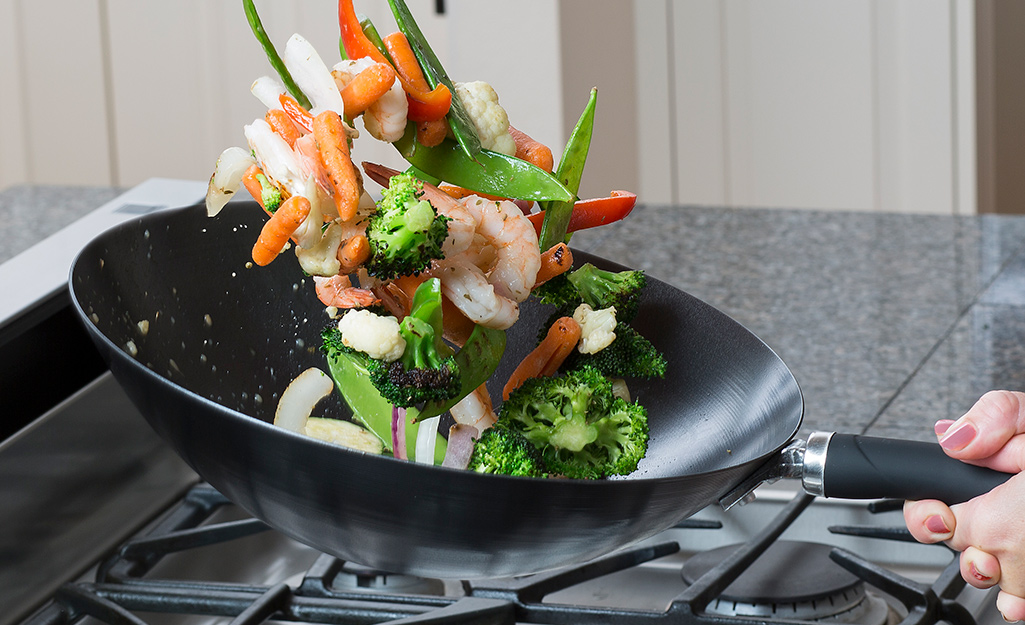
Choose an aluminum wok with some weight to it. Woks made of aluminum have great heat conductivity. They get hot fast and can handle heat for long periods. This makes them ideal for stir frying due to their overall good heat distribution. They are good woks for sticky foods but not for acidic ingredients.
Cast Iron Woks

Durable, beautiful cast iron makes one of the best wok pans available. Since it retains heat long after the flame is gone, it’s ideal for cooking thick meats. Need to deep fry or make a big batch stir-fry? Grab a cast iron wok. This campfire staple is budget-friendly and has a long lifespan. It can be used on virtually any cook top.
But it does require more maintenance than other woks. You need to hand wash, dry and oil it. It is heavy and handles get hot, so they aren't ideal for tossing.
Enameled Woks

Who said hard-working good woks can’t look great, too? Enameled woks hold heat well and make short work of most dishes. They come in a variety of colors to match any style. They can go from stove to table and are easy to clean. They do have a tendency to stick, so they are not the first choice for stir-fries. But they are great for deep frying and stews.
Types of Wok Handles
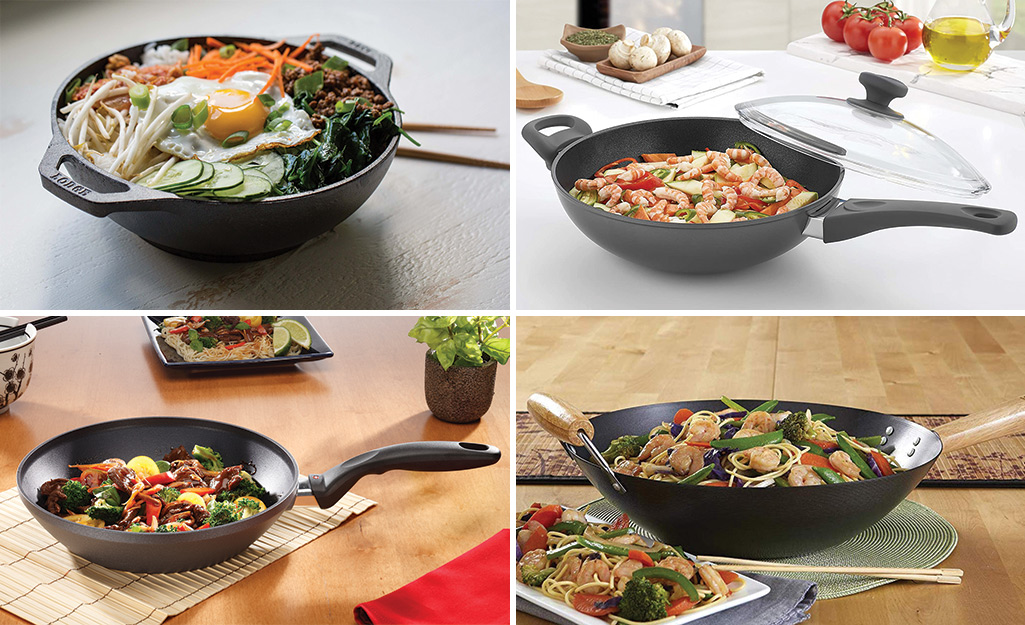
Wok handles vary. It depends on the region the wok style originally came from. Cantonese-style woks have a short, small handle. This makes it perfect for light frying. Found on Northern Asian-style woks, a single long handle makes it easy to mix food in the pan. Some traditional woks found in professional kitchens have one short and one long handle. This gives the cook the option to flip and serve food seamlessly.
Flat Bottom vs. Round Bottom Woks
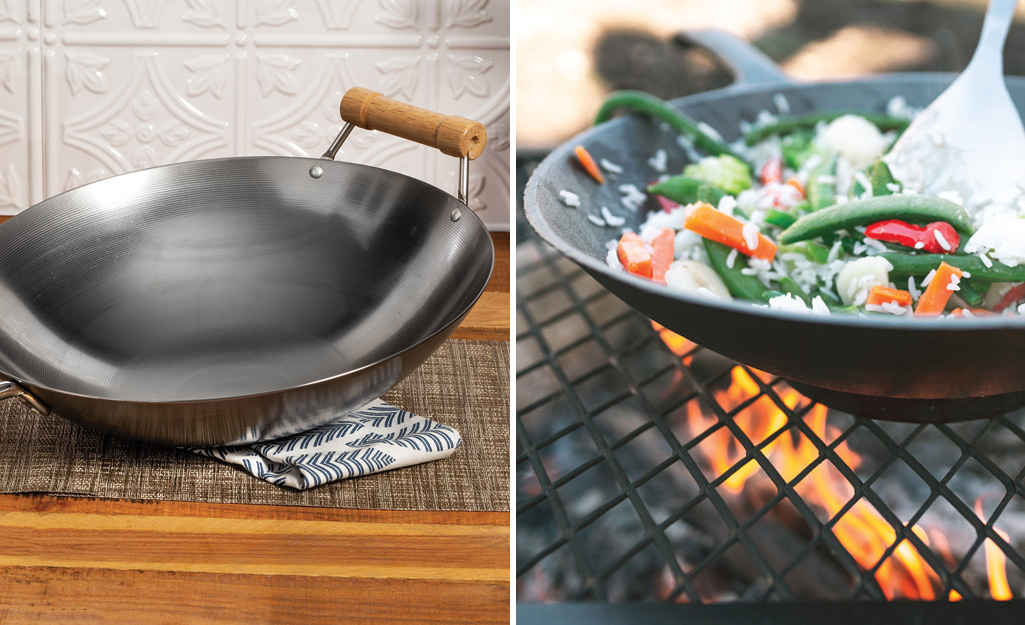
Consider how many people you cook for. This is how to decide the best shape, width and height of your wok. Flat-bottom wok pans measure 4 inches to 6 inches wide. Round bottom wok pans vary in size. Some are 14 inches to 16 inches in diameter. Bigger woks more adequately transfer heat to the sides of the pan. Smaller woks, 12 inches or fewer, are ideal for cooking one to two servings. These are great for a single or two-person household.
A 14-inch wok is the most popular. It will allow you to cook for up to four people. A larger wok will feed more people and provide more servings. But, it will be harder to store and may not fit on your stove top burners. No matter the size of the wok, deeper is not always better. Four to five inches in depth is more than adequate for most wok cooking.
Round bottom woks are more likely to produce restaurant-quality results. But you ideally need a gas stove top. You'll also want a special ring to cradle the wok.
Some favor round bottom woks. Why? For the easy scooping motion they allow when stirring. The shape gives optimal distribution of heat.
Wok Accessories

Enjoy cooking more with the right wok accessories:
- A metal spatula makes it easy to flip and turn ingredients quickly.
- A lid will lock in the flavor of your food. It's essential to keeping your cook top clean from any splatter. It's also important if you do braising, steaming or stewing.
- A wok ring stabilizes a round bottom wok. You'll want one especially if your wok has a long handle. It also helps manage heat distribution throughout the pan.
- A strainer is handy when deep frying to scoop out finished fried items.
Cleaning Tips

- Always season or cure a wok and lid (if necessary) before its first use. Do this even if it comes pre-seasoned. Depending on use, your wok may need curing periodically.
- Clean your wok after each use. Rinse with cold, soapy water. Use plastic or non-abrasive scrubbers to prevent scratches. Always check manufacturer's instructions on washing instructions. Check for dishwasher or hand-washing only instructions. Also check whether soap is recommended for cleaning. Some do not recommend it.
Looking for a wok pan to complete your kitchen? The Home Depot delivers online orders when and where you need them.

